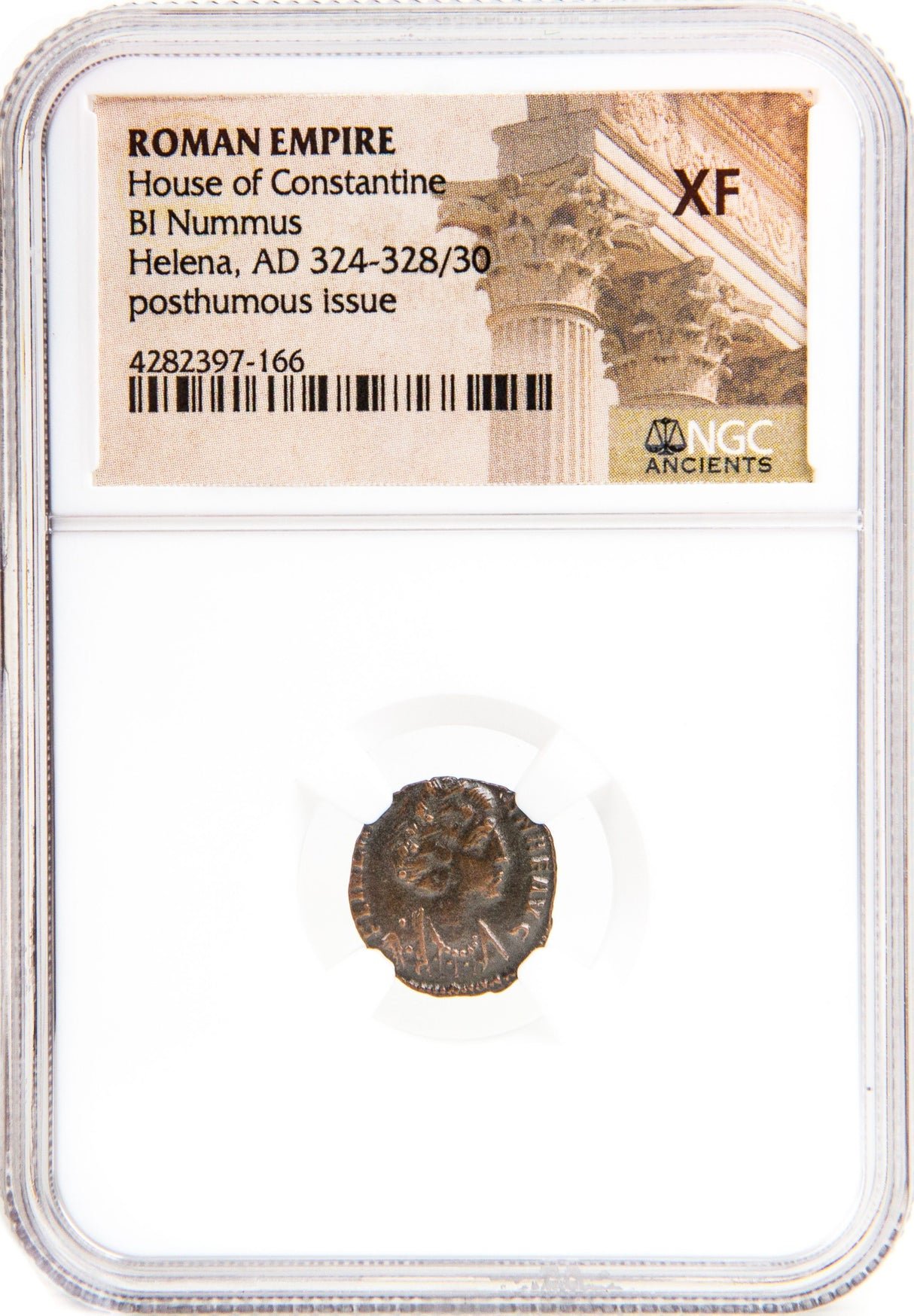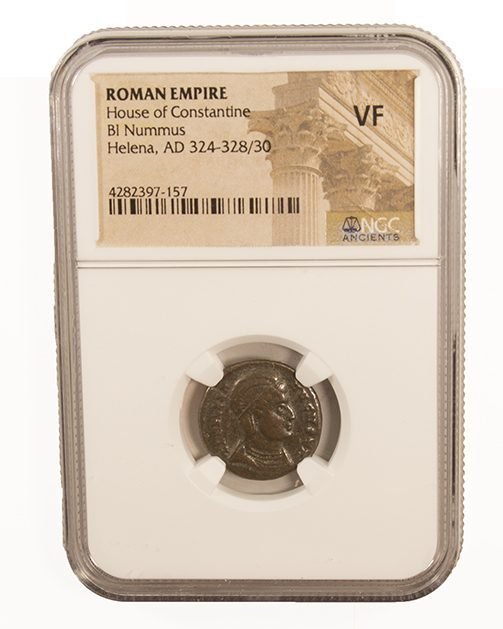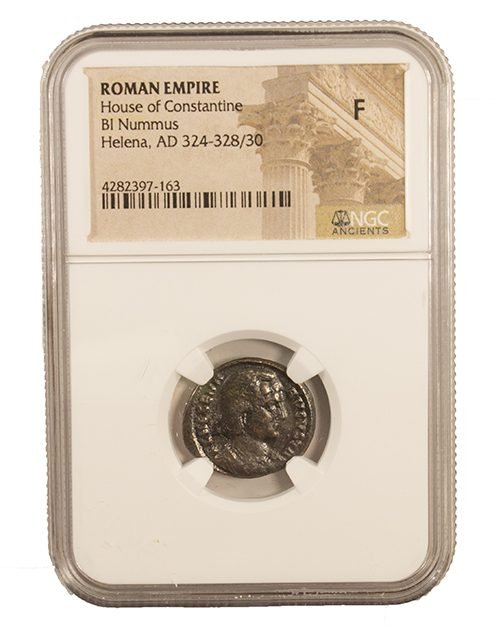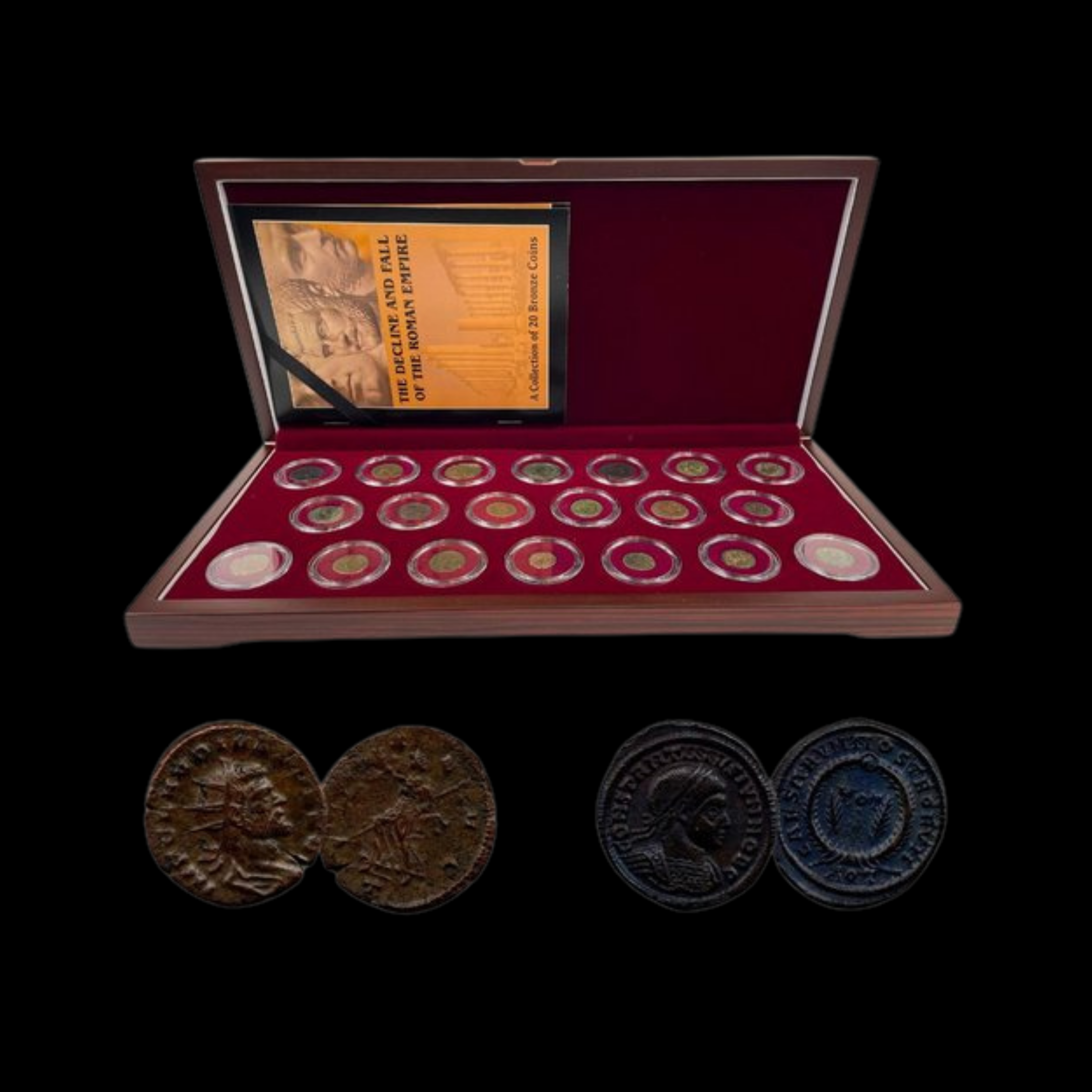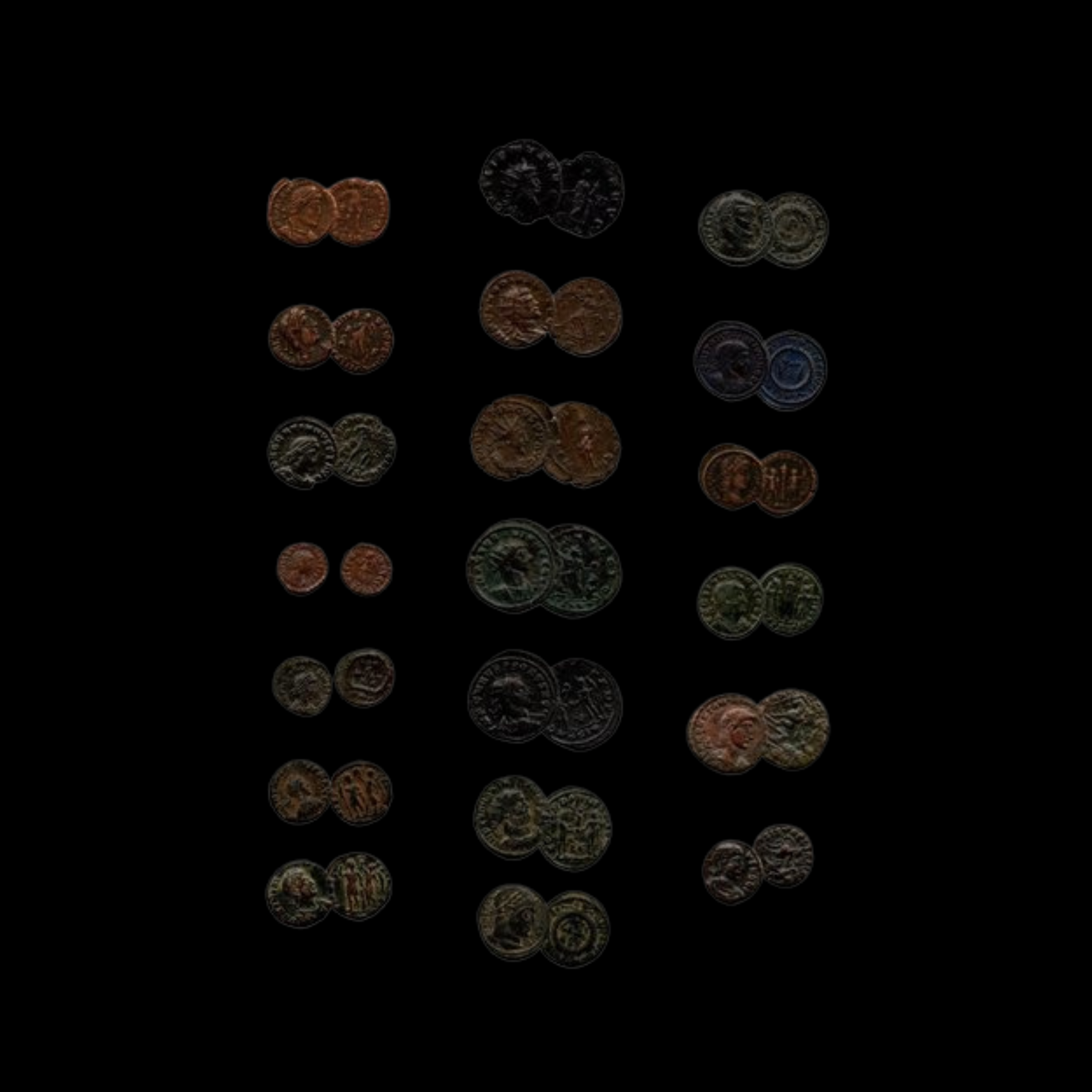 Image 1 of 8
Image 1 of 8

 Image 2 of 8
Image 2 of 8

 Image 3 of 8
Image 3 of 8

 Image 4 of 8
Image 4 of 8

 Image 5 of 8
Image 5 of 8

 Image 6 of 8
Image 6 of 8

 Image 7 of 8
Image 7 of 8

 Image 8 of 8
Image 8 of 8









Roman Silver Antoninianus of Valerian I (about 1,765-1,772 years ago)
This silver-washed coin is an Antoninianus issued during the reign of Emperor Valerian I, who ruled the Roman Empire from 253 to 260 CE before suffering one of the most humiliating fates of any Roman emperor. The coin represents the increasingly militarized nature of Roman imperial politics during the Crisis of the Third Century.
Coin Description:
Front side: Portrait of Emperor Valerian facing right, wearing a radiate crown (distinguishing feature of the Antoninianus denomination), with his name and titles in Latin around the edge.
Back side: Likely features military themes, Roman deities like Jupiter or Mars, or personifications of virtues such as Fortuna, Pax, or Victoria.
Technical Details:
Billon composition (low silver content mixed with copper)
Denomination: Antoninianus (technically a double-denarius, though with debased silver content)
Weight: Approximately 3-4 grams
Diameter: Approximately 22-23 mm
NGC Certified for authentication and preservation
Minted between 253-260 CE
Condition as specified by NGC certification
Historical Significance: Valerian's reign ended in unprecedented disaster when he was captured alive by the Sassanid Persian King Shapur I in 260 CE during a campaign in the East. No Roman emperor had ever before been taken prisoner by a foreign power. According to Persian accounts, Valerian was used as a human footstool for the Persian king and eventually died in captivity. His body was reportedly preserved by taxidermy and displayed as a trophy in the Persian royal palace. This extraordinary humiliation marked a low point in Roman imperial prestige during the Crisis of the Third Century, leaving his son Gallienus to rule a fractured empire.
This silver-washed coin is an Antoninianus issued during the reign of Emperor Valerian I, who ruled the Roman Empire from 253 to 260 CE before suffering one of the most humiliating fates of any Roman emperor. The coin represents the increasingly militarized nature of Roman imperial politics during the Crisis of the Third Century.
Coin Description:
Front side: Portrait of Emperor Valerian facing right, wearing a radiate crown (distinguishing feature of the Antoninianus denomination), with his name and titles in Latin around the edge.
Back side: Likely features military themes, Roman deities like Jupiter or Mars, or personifications of virtues such as Fortuna, Pax, or Victoria.
Technical Details:
Billon composition (low silver content mixed with copper)
Denomination: Antoninianus (technically a double-denarius, though with debased silver content)
Weight: Approximately 3-4 grams
Diameter: Approximately 22-23 mm
NGC Certified for authentication and preservation
Minted between 253-260 CE
Condition as specified by NGC certification
Historical Significance: Valerian's reign ended in unprecedented disaster when he was captured alive by the Sassanid Persian King Shapur I in 260 CE during a campaign in the East. No Roman emperor had ever before been taken prisoner by a foreign power. According to Persian accounts, Valerian was used as a human footstool for the Persian king and eventually died in captivity. His body was reportedly preserved by taxidermy and displayed as a trophy in the Persian royal palace. This extraordinary humiliation marked a low point in Roman imperial prestige during the Crisis of the Third Century, leaving his son Gallienus to rule a fractured empire.
This silver-washed coin is an Antoninianus issued during the reign of Emperor Valerian I, who ruled the Roman Empire from 253 to 260 CE before suffering one of the most humiliating fates of any Roman emperor. The coin represents the increasingly militarized nature of Roman imperial politics during the Crisis of the Third Century.
Coin Description:
Front side: Portrait of Emperor Valerian facing right, wearing a radiate crown (distinguishing feature of the Antoninianus denomination), with his name and titles in Latin around the edge.
Back side: Likely features military themes, Roman deities like Jupiter or Mars, or personifications of virtues such as Fortuna, Pax, or Victoria.
Technical Details:
Billon composition (low silver content mixed with copper)
Denomination: Antoninianus (technically a double-denarius, though with debased silver content)
Weight: Approximately 3-4 grams
Diameter: Approximately 22-23 mm
NGC Certified for authentication and preservation
Minted between 253-260 CE
Condition as specified by NGC certification
Historical Significance: Valerian's reign ended in unprecedented disaster when he was captured alive by the Sassanid Persian King Shapur I in 260 CE during a campaign in the East. No Roman emperor had ever before been taken prisoner by a foreign power. According to Persian accounts, Valerian was used as a human footstool for the Persian king and eventually died in captivity. His body was reportedly preserved by taxidermy and displayed as a trophy in the Persian royal palace. This extraordinary humiliation marked a low point in Roman imperial prestige during the Crisis of the Third Century, leaving his son Gallienus to rule a fractured empire.
Valerian (/vəˈlɪəriən/ və-LEER-ee-ən; Latin: Publius Licinius Valerianus; c. 199 – 260 or 264) was Roman emperor from 253 to spring 260 AD. Valerian is known as the first Roman emperor to have been taken captive in battle, captured by the Persian emperor Shapur I after the Battle of Edessa, causing shock and instability throughout the Roman Empire. The unprecedented event and his unknown fate generated a variety of different reactions and "new narratives about the Roman Empire in diverse contexts".[4]
Unlike many of the would-be emperors and rebels who vied for imperial power during the Crisis of the Third Century, Valerian was of a noble and traditional senatorial family. Details of his early life are sparse, except for his marriage to Egnatia Mariniana, with whom he had two sons: Publius Licinius Egnatius Gallienus (his co-emperor and later successor) and Licinius Valerianus.[5]






